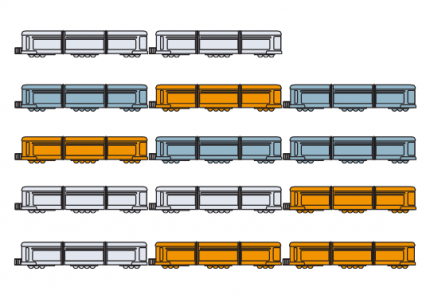
Multi traction is an important subject for transport companies. In the daily business, the transport capacity must be flexibly adapted to the passenger volume. For this, more trains of the same company are coupled together which are normally operating as single units in slack times. Multi traction units are planned for peak times, but also unplanned when unexpectedly high passenger volume occurs. The latter can, for example, result from the failure of other trains. In the normal multi traction case, several vehicles are connected together as a composition for the entire journey. It is, however, also possible to add to or reduce the composition during a journey. In this, vehicles are added to or removed from the composition. This occurs often on sections in which the passenger volume is only large in particular areas. The least frequent form of multi traction is the splitting. In this, a composition of several trains is split up at a particular point in the journey and the two new resulting compositions drive to different destinations. The reason for the use of splitting can be that stations hit their capacity limits and no further trains can be conducted via this station. In this case, trains with identical intermediate destinations can be driven as one composition up to this intermediate destination and after successful splitting, the part-trains can drive from there on to their different destinations. Splitting is the most demanding type of multi traction for the passenger information system. Here in particular, it is especially important to supply the passengers with the correct information so that they can reach their final destinations easily and stress-free.